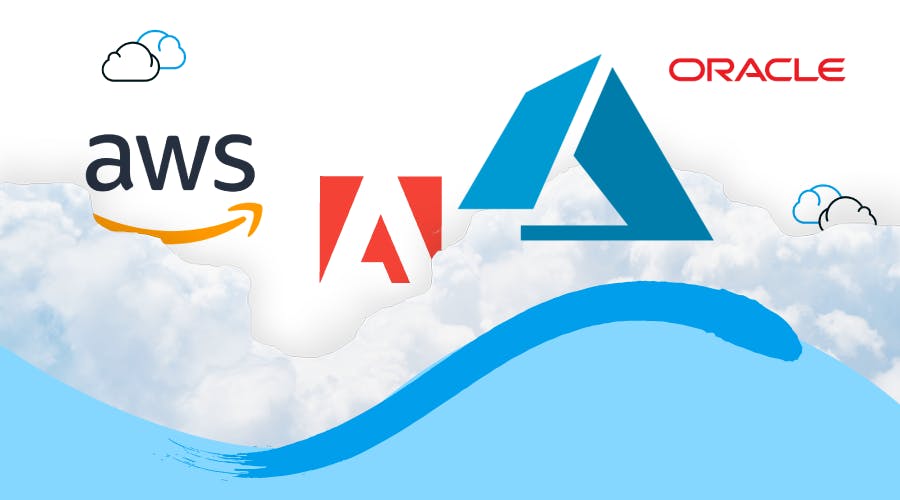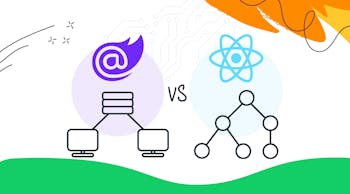You get a cloud, and you get a cloud! Everyone gets a cloud!
It seems like everything is making its way to the cloud, whether it’s infrastructure, software, applications, services, products, or even an operating system. And for a good reason.
Recently, we talked about how integrating cloud computing into your business model can help save you some much-needed time, money, and stress. You can check out the full post here.
Today, cloud computing accounts for a hefty 33 percent of IT budgets worldwide. A considerable glow up from past data storage technology, the cloud lets businesses access applications from anywhere, decreases data loss with regular backups to other servers, and saves companies considerable money on server maintenance by using remote resources, among other things.
VMware CEO Paul Maritz once said that when it comes to the cloud, it’s about "how you do computing, not where you do computing." And these days, it's all the rage.
So you’ve decided you want to put your business on Cloud 9. That’s great and is the first step towards making that a reality. However, your next job is to identify which cloud computing services are suitable for you — and there are many!
To help get you started with this process, we’ve identified the top five cloud computing technologies out there today, along with their offerings, pricing, and features.
TYPES OF CLOUD COMPUTING SERVICES
Before we dive into specific technologies, we want to make sure you’re familiar with the three different types of cloud computing: infrastructure-as-a-service (IaaS), platform-as-a-service (PaaS), and last but not least, software-as-a-service (SaaS).
IaaS refers to the fundamental building blocks of computing that can be rented, such as physical or virtual servers, storage, and networking. This is perfect for companies who want to build applications from the ground up and control nearly all the elements themselves. This does, however, require firms to have the technical skills to operate services at that level.
PaaS is the next layer up on the cloud computing cake. In addition to the underlying storage, networking, and virtual servers, this also includes the tools and software that developers need to build applications. These can include things like middleware, database management, operating systems, and development tools.
SaaS is the delivery of applications-as-a-service and is probably the version of cloud computing that most people are used to on a day-to-day basis. SaaS allows users to connect to and use cloud-based apps over the Internet. Typical examples are email, calendaring, and office tools (such as Microsoft Office 365).
Now that you know the three main types of cloud computing let’s look at the top five cloud computing technologies.
1. AMAZON WEB SERVICES
In 2006, Amazon Web Services (AWS) began offering IT infrastructure services to businesses in the form of cloud computing. Today, AWS is the world’s most comprehensive and broadly adopted cloud platform, offering over a whopping 165 fully-featured services from data centers globally.
One of the most significant benefits of using AWS is its flexibility and agility. Instead of waiting weeks or months for hardware, AWS allows you to instantly deploy new applications, scale up as your workload grows, and scale down based on demand.
AWS offers low, pay-as-you-go pricing with no up-front expenses or long-term commitments, which is a massive plus in our book.
2. MICROSOFT AZURE
Since its creation in 2008, Microsoft Azure has grown to become the second-largest of the top three public cloud platforms — just behind the AWS mentioned above and ahead of Google Cloud Platform (GCP).
Suppose you check out the Microsoft Azure website. You’ll be blessed with a directory chock full of hundreds of different services you can use, including complete virtual machines, databases, file storage, backups, and services for mobile and web apps. Digging through these hundreds of services, you’ll see that you can do practically anything. And for anything Azure doesn’t offer, you can set up a Windows or Linux virtual machine that hosts whatever software you want to use. We see you, Azure. We see you.
Another perk? Anyone can use Microsoft Azure. All you have to do is sign up for a new account. Oh, and this account just so happens to also come with $200 in credits that you can use over the first 30 days so you can take it for a test drive to make sure it works for you. You also get some free services for the first year.
3. GOOGLE CLOUD PLATFORM (GCP)
Sometimes, Google Cloud Platform (GCP) can feel a bit like the third wheel among the Big Three public cloud providers. While it’s true that GCP has made a smaller splash in the public cloud computing space than its two biggest competitors, AWS and Microsoft Azure, it’s also growing the fastest.
So what makes GCP stand out, and why is it on the rise? For one, it’s affordable. Users only need to pay for the computing time they’re using. They also are given pretty sweet discount rates for long-running workloads. GCP also shows off by having one of the largest networks across the world. It offers extraordinary security measures, gives way for real-time migration of the virtual tools, and ensures better performance with increased response times.
4. ORACLE CLOUD
Oracle, known for its software expertise and data processing prowess, has combined its forces with cloud computing capabilities and entered an arena that is rapidly gaining ground. Although Oracle is somewhat of a late bloomer, launching its first IaaS offering in 2015, it’s brought a very robust infrastructure to go head-to-head with other market players.
Oracle calls its data regions “cloud regions.” Oracle currently has over 30, including the government. Basically, anywhere you need to be, Oracle is there. As far as reliability, Oracle has a reliable infrastructure that is backed by a very comprehensive end-to-end SLA that covers the performance, availability, and manageability of services.
The payment model is similar to that of AWS and GCP: users can pay for services on an as-needed basis, which means leveraging flexibility depending on how often they need to rely on services.
5. ADOBE CLOUD
If you work in design, media, marketing, or photography, you’ve probably already used one or more of the programs in the Adobe Creative software suite. Apps like Photoshop, Premiere, and Lightroom are the industry standard for creatives.
The Adobe Creative Cloud, also known as Adobe CC or the Adobe Cloud, is a comprehensive collection of Adobe desktop software and mobile applications under one umbrella. Adobe CC is acquired and maintained through a monthly subscription service that includes more than 20 different fully-realized programs.
The Adobe Cloud Suite also includes a few goodies that aren’t fully-fledged software applications. Also included are the Adobe Font Library, an allotment of cloud storage space, the Adobe Portfolio Program, collaboration tools, and membership for Behance.net.
As you can see from the list above, the future of cloud computing is very bright. The best news is that this directly translates into more opportunities for you and your business. Depending on your needs and wants, there's a technology service out there to help take your professional goals and objectives to the next level.









